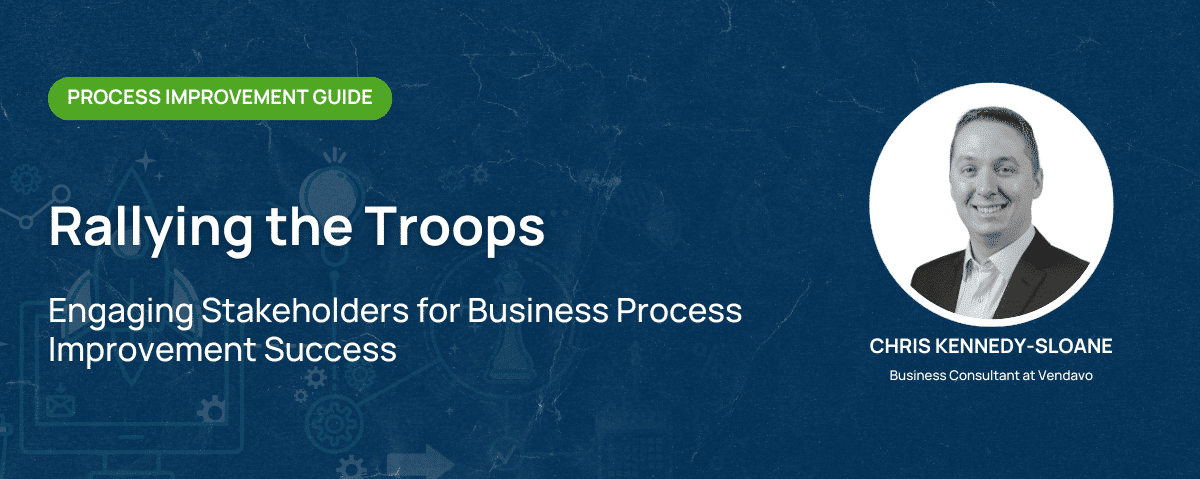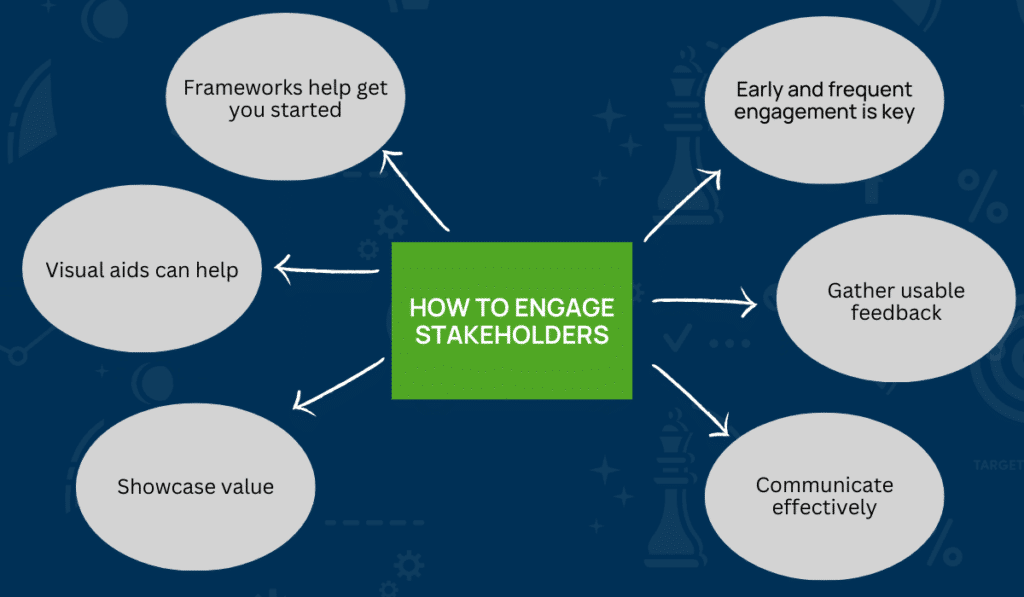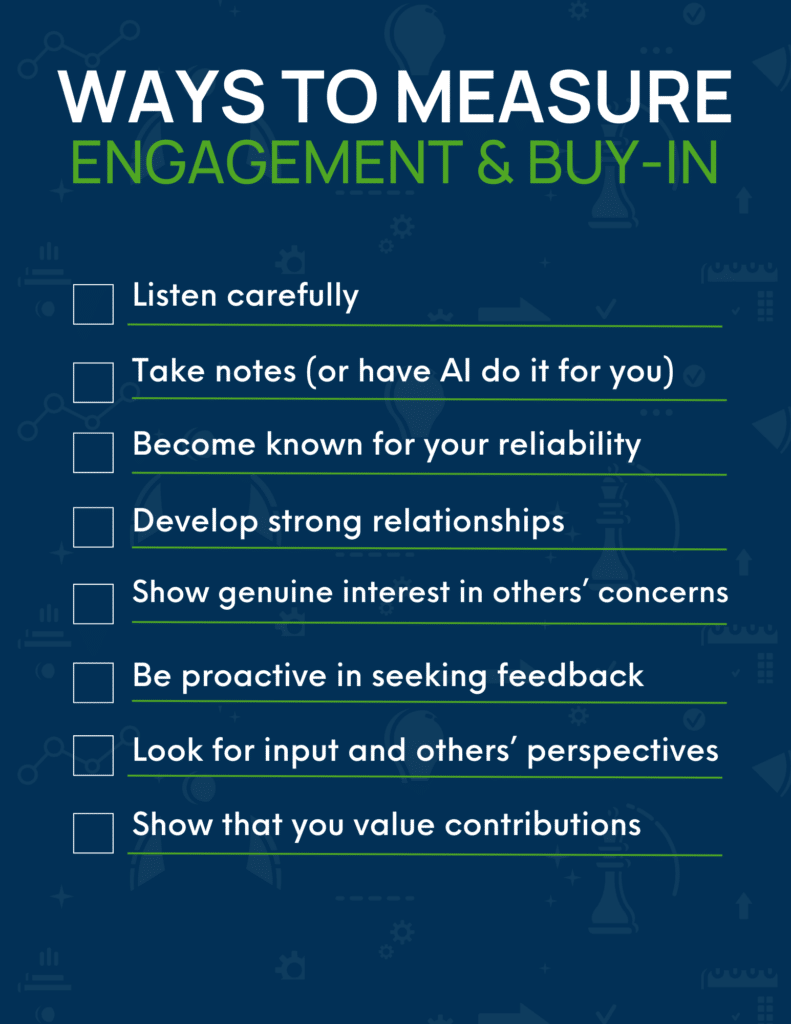
Engaging stakeholders is key to business process improvement project success. But first you need to identify the right people, get (and keep) them involved, and prepare to tackle a few common challenges. Chris Kennedy-Sloane, Business Consultant at Vendavo, explains his top tips for turning skeptics into supporters to ensure your projects thrive.
No business project can thrive in isolation. The success of any business process improvement project hinges on the engagement and involvement of stakeholders and key players. Without their support and buy-in, even the best-laid plans can falter.
So, how do you rally the troops effectively? Here are the insights and strategies you need to ensure your project stays on track and reaches its full potential.
The Stakeholder Web and Why it Matters
Every project impacts multiple organizational layers. It’s tempting to focus solely on the most obvious stakeholders. For example, when changing something like your quoting process, you might focus on engaging your sales team. But you have to dig deeper and identify all the affected parties:

- Sales – You’re right to ensure you have the buy-in of the sales team. The ones who work to actually sell your products and services are key. But don’t forget about your sales managers, who might be dealing with escalations if something goes wrong, or your pre-sales team like marketing and Business Development Representatives who are nurturing potential leads
- Customer service teams – Your customer service teams will be interacting with quotes and can provide valuable feedback for improvement along the way. They also hear most frequently directly from your customers and can provide an added feedback loop.
- The finance department – Your finance team needs to extract financial data from the new system and will likely need to approve the spending on the initial investment. It’s a great idea to have them on your side.
- Senior executives – Your leadership team cares about profitability and business agility. Bring them along throughout the entire journey.
This comprehensive approach ensures no stone is left unturned, building a robust web of influence that supports the project from multiple angles.
Consider the broader impact to create a network of informed and invested stakeholders who are more likely to support or even champion the project. This helps in gaining initial buy-in and ensures continued support throughout the project lifecycle.
How to Ensure No Stakeholder is Overlooked
The fear of missing critical stakeholders is common in projects. There’s a straightforward solution here: ask your identified stakeholders for their input.
Here are a few suggestions:

- Frameworks help get you started
It may help to consider a RACI (Responsible, Accountable, Consulted, and Informed) matrix to map stakeholders’ roles and responsibilities. This ensures no critical stakeholder is overlooked and that everyone understands their involvement.
- Early and frequent engagement is key
Engaging stakeholders early – ideally, even before your project begins – helps stakeholders build a sense of ownership and accountability. - Gather usable feedback
Engaging stakeholders early means you can gather valuable insights that can shape the project in its initial stages. This proactive approach can prevent potential issues and foster a collaborative environment where stakeholders feel valued and heard.
- Communicate effectively
Clear communication keeps stakeholders engaged. Ensure your messages are easily digestible. Avoid unnecessary details that might cause confusion or conflict. Be honest about what you do or don’t know. Always under-promise and over-deliver. - Showcase value
Focus on the benefits each stakeholder will gain. Tailor your message to address specific concerns and interests. For instance, explain how a new quoting process will streamline sales operations, reduce customer service inquiries, and provide more accurate financial data.
- Visual aids can help
Use charts, graphs, and infographics to enhance your communication. These aids make complex information more accessible and can help stakeholders better understand the project’s value and objectives.
Different departments offer unique perspectives, which can add depth to your stakeholder map. Not all suggestions may be useful, but this process helps expand your understanding of who needs to be included and why.
Overcoming Common Challenges
Lack of engagement is a significant challenge you may encounter in your project. To address this, you may need to flex your communication style:
Offer a stakeholder the option to step back from the project to prompt re-engagement. If you do this, you need to make it clear they lose their right to input if they leave. Another option is to find an ally with more credibility to appeal to them. This could be a peer or a more senior stakeholder.
Another common challenge is resistance to change or skepticism about the project. Treat skepticism and resistance as separate issues.
- Embrace healthy skepticism as an opportunity to address potential issues early.
- Listen to feedback, as it can turn detractors into project champions.
- Understand the root cause of resistance. Is it workload, team impact, or budget concerns?
- Spend time with stakeholders to uncover their concerns.
- Address these underlying issues.
Lastly, create a feedback loop so stakeholders can voice their concerns and suggestions. This open line of communication builds trust and demonstrates that you value their input. It also helps you avoid a lot of the common mistakes that can impact pricing implementation projects.
How to Encourage Ongoing Engagement
Stakeholders have varying preferences for communication frequency and style. Senior management might prefer periodic updates, for example, while those on the ground might need more frequent touchpoints.
- Establish a communication cadence that keeps everyone engaged.
- Use standing times instead of standing meetings to discuss project issues as they arise. This ensures no one’s time is wasted.
- Regular updates and check-ins help maintain momentum and keep stakeholders informed about the project’s progress.
- Celebrate small wins and milestones to keep morale high and reinforce the value of the project.
By maintaining ongoing engagement, you can quickly identify and address any issues that arise, ensuring the project stays on track and stakeholders remain supportive.
Ways to Measure Engagement and Buy-In
Track engagement through measurable feedback methods. Regularly ask for feedback or opinions on minor decisions to gauge how well stakeholders are engaged.
There are many tools you can use to gauge buy-in:
- Meeting attendance
- Participation in standing times
- Surveys
- Feedback forms
- Response rates
Analyze this data to identify areas for improvement and adjust communication accordingly.
For those new to business process improvement, the key is to talk to people – ideally face-to-face. Building a reputation for thoughtfulness and attention to detail is invaluable in project management.
Here are a few tips:

- Listen carefully
- Take copious notes (or have AI do it for you)
- Become known for your reliability
- Develop strong relationships
- Show genuine interest in others’ perspectives and concerns
- Be proactive in seeking input and feedback
- Demonstrate that you value others’ contributions
Building a strong foundation of trust and communication helps you navigate the complexities of stakeholder engagement and drive successful project outcomes.
It’s Time to Rally the Troops
Not every stakeholder will share your passion for the project, and that’s okay. If someone isn’t interested in engaging, ask them for alternative suggestions. Often, they’ll be relieved to have an out and will provide helpful alternatives.
Remember, the success of any project depends on the people involved. Prioritizing stakeholder engagement sets the stage for a collaborative, supportive environment where everyone works together towards a common goal. With these strategies in mind, you can confidently tackle any business process improvement project and lead it to success.
Ready to take your organization’s growth and profitability to the next level? Reach out today to speak with a Vendavo expert about how our full suite of commercial excellence and revenue optimization solutions can help.
